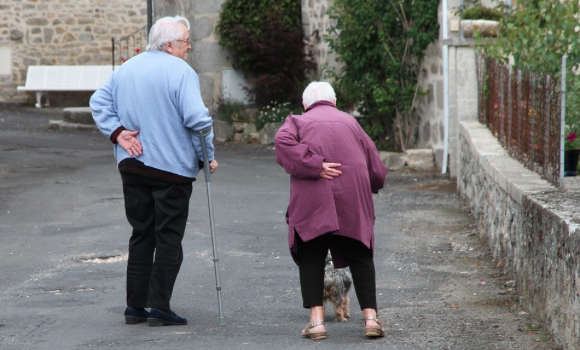Debilitating disease recognised with a national day

The Australian Institute for Musculoskeletal Science, the University of Melbourne and Western Health are joining forces to launch Sarcopenia Australia Day on Wednesday, 4 July.
Sarcopenia is placing older people at high risk of falls, fractures, disability, hospitalisation and even death. But Australian researchers hope to develop new treatments for the debilitating disease.
Sarcopenia, which is a combination of low muscle mass and weakness in older adults that causes functional problems, was recognised as a disease and included in the International Classification of Diseases in 2016.
Australian Institute for Musculoskeletal Science (AIMSS) Director and Professor of Medicine at the University of Melbourne Gustavo Duque said Australian authorities were expected to follow next year.
“By increasing awareness that sarcopenia is not just part of normal ageing, our medical and research communities will be more aware of the existence of this disease, and also of the tools to identify it,” Professor Duque said.
University of Melbourne Senior Research Fellow and AIMSS Director of Social Epigenomics and Population Health Sharon Brennan-Olsen said a person’s socioeconomic status could affect their risk levels.
“Many of the lifestyle-related risk factors for sarcopenia are socially-patterned, thereby predisposing socially disadvantaged individuals to a greater risk of sarcopenia, and thus reducing an older person’s quality of life, independence, and the ability to remain in their own home,” Dr Brennan-Olsen said.
The Australian and New Zealand Society for Sarcopenia and Frailty Research has designated 4 July as Sarcopenia Australia Day.
Activities organised by AIMSS, the University of Melbourne and Western Health include senior citizens from western Melbourne taking part in a “grip strength match” to test their muscle strength, using one of the most commonly used tools to identify sarcopenia. Those with the strongest grip strength will win awards.
AIMSS Deputy Director Alan Hayes said official recognition would provide greater impetus to develop new and novel treatments.
“Although age-related muscle loss is inevitable, therapies and interventions that can halt or reverse the effects of sarcopenia are a realistic possibility,” Professor Hayes said.
“Recognising sarcopenia will increase awareness of the pivotal role skeletal muscle plays in good health and longevity, meaning health professionals need to recognise the importance of strength training and dietary or pharmaceutical interventions to maximise muscle mass and function.”
AIMSS is Australia’s leading centre in sarcopenia, with an ongoing clinical trial testing the effect of a new drug.
For more information on sarcopenia or AIMSS research, visit: www.aimss.org.au or contact gwen.mcmaster@unimelb.edu.au . Click here for information about online training on osteosarcopenia.
About AIMSS
The Australian Institute for Musculoskeletal Science (AIMSS) involves clinicians, epidemiologists and biomedical researchers from Western Health, Victoria University and the University of Melbourne. They bring researchers closer to the health system to better influence research-based healthcare delivery.
It aims to improve community health and wellbeing through innovative and integrative musculoskeletal research and advocacy. AIMSS’ mission is to undertake focused, high quality and innovative research, foster collaborations between the research and general community, and promote healthy and active living.
AIMSS leads the way in basic, translational and clinical research, providing a cohesive, inclusive and inspiring environment to attract and retain a high-calibre workforce. It continually develops interactions between clinicians, researchers and the community to promote healthy ageing and improve the understanding, treatment and prevention of musculoskeletal disease.
AIMSS has multiple ongoing collaborations with research institutes in Australia and around the world. Its strong collaboration network allows it to have a major impact on musculoskeletal research worldwide.